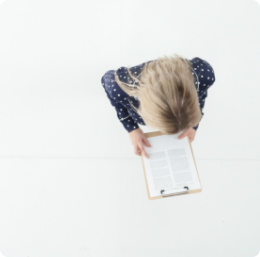What MCM Sheets Can Do for Your Next Project
Design flexibility: It’s a term often used by architects when discussing building materials and products. But what does it mean? Why is it important?
“To me, it means I can get the product to look the way I want it to look on the building,” says Corie Baker, AIA, senior architect and healthcare market sustainability leader at Gresham Smith’s Richmond, Va., office.
When a building material is flexible, it works with traditional and modern structures. It offers an endless color palette. It can be used in many ways. And it opens doors to new design capabilities and concepts. MCM (metal composite material) sheets are a perfect example of a building material that offers ultimate design flexibility.

Standing Out
Whether it’s to improve wayfinding, highlight a structure from the road, or design an element that stands out, MCM sheets are able to create accents and emphasis. Panel spacing, color, finish, gloss, and size are all factors that can be customized to draw attention.
“We developed a standout design element on a recent Virginia project by creating a four-and-a-half-story stair tower,” Baker says. “We used MCM panels for the entryway framework and surrounding the glass that encases the tower.”
Accented with decorative lighting, floor-to-ceiling artwork, and a slightly different color as compared to the sheets used on other parts of the building, using MCM in this way not only helps the stair tower stand out from the brick structure, but it also acts as a breathtaking beacon at night.
Another trend seen more often to create striking designs: curving and bending MCM panels to fabricate different forms and orientations. As architects and their clients move away from traditionally shaped buildings to more intricate designs, MCM supports this level of sophistication.
Blending In
While MCM creates focal points on its own, it can also be used to highlight another building material or design feature, whether it’s an entryway or beautiful stonework. Alternatively, it can be used to draw the eye away from certain areas. MCM sheets can be strategically integrated into a design to blend and conceal by covering holes and gaps that detract from the overall look.
“I’ve used it to fill in gaps between windows or between floors within storefront and curtainwall systems,” Baker says. “This helps form a seamless exterior.”


Creating Synergy
When designing an addition, MCM creates synergy between old and new. Using these sheets in a new structure can honor an existing design without copying it. The result is an addition that complements the original building while also blending with the surrounding environment.
Because MCM meshes well with a variety of other materials, you’ll often find it used as part of what Baker calls a “layered” design approach—where materials like brick and glazing come together with MCM to create visual interest.
“Beyond costs, if I think about why I might choose to use any product, I think about its flexibility, durability, and reputation for standing the test of time,” she says. “I’m also thinking about constructability and sustainability. MCM panels hit the mark.”






